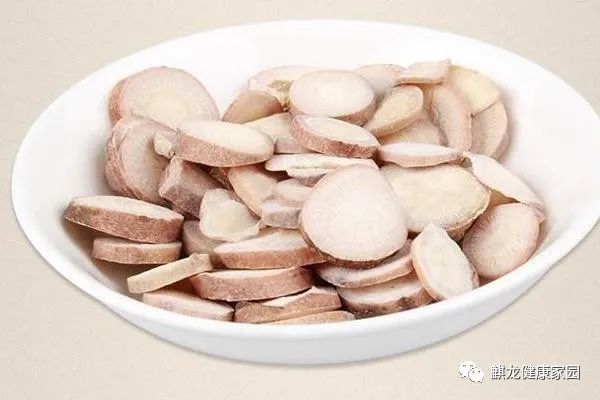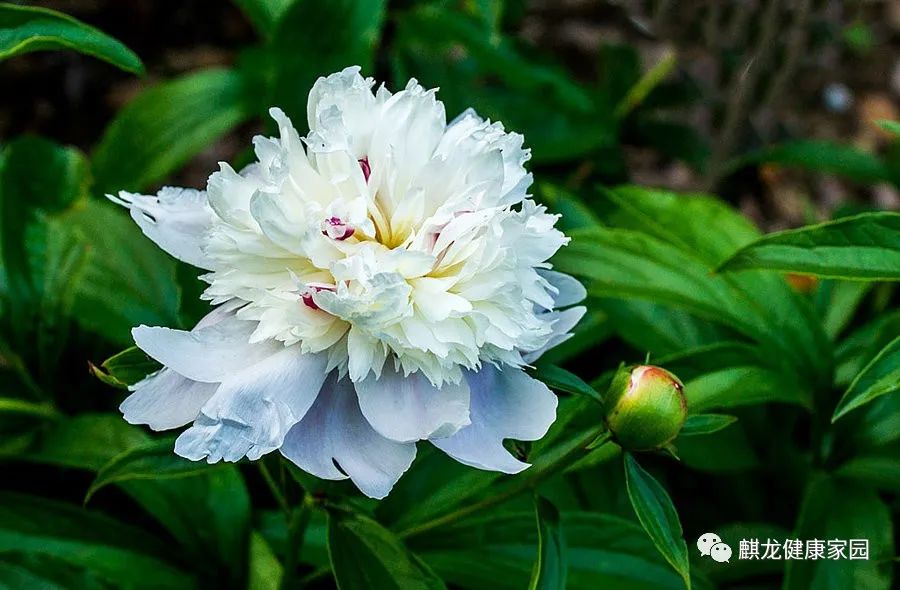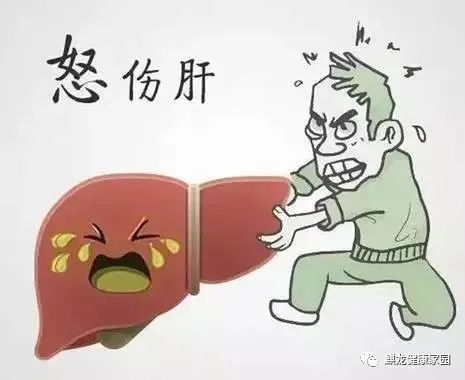

Bai Shao (sháo), known as White Peony in English, is the root of the plant Peony (Paeonia lactiflora), belonging to the family Ranunculaceae. The roots are harvested in summer and autumn, cleaned of soil and fibrous roots, peeled, blanched in boiling water or slightly cooked until evenly heated, and then dried in the sun. When used, they are soaked and sliced, and can be used raw, stir-fried, or wine-fried. Bai Shao is known for its ability to nourish blood and regulate menstruation, astringe yin and stop sweating, soften the liver and relieve pain, and pacify liver yang.
Chemical Components
The main active components of Bai Shao include paeoniflorin, tannins, and peonidin, along with benzoic acid, volatile oils, fatty oils, carbohydrates, stigmasterol, and triterpenoid compounds.
 (Peony Flower)
(Peony Flower)
Properties and Channels
Bai Shao is slightly cold in nature, with a bitter, sour, and sweet taste, and it enters the liver and spleen channels.Functions and IndicationsThe effects of Bai Shao include soothing the liver and relieving pain, nourishing blood and regulating menstruation, and astringing yin and stopping sweating. It is indicated for headaches, dizziness, flank pain, abdominal pain, limb cramps, blood deficiency with pale complexion, irregular menstruation, spontaneous sweating, and night sweats related to liver qi and liver blood disorders. Contraindications1. Bai Shao is cold in nature; it should be avoided in cases of cold-type abdominal pain or diarrhea;2. Should not be consumed during the period of measles in children;3. Should not be taken with the herb Li Lu (Veratrum) due to potential interactions.(The medicinal effects of herbs are for informational purposes only and should be used under the guidance of a qualified physician or pharmacist. Self-medication is not recommended.)(All images and content are sourced from the internet.)Recommended Reading: What is fasting? Why fast? Confucius’ thoughts and ten types of cured meats.
Contraindications1. Bai Shao is cold in nature; it should be avoided in cases of cold-type abdominal pain or diarrhea;2. Should not be consumed during the period of measles in children;3. Should not be taken with the herb Li Lu (Veratrum) due to potential interactions.(The medicinal effects of herbs are for informational purposes only and should be used under the guidance of a qualified physician or pharmacist. Self-medication is not recommended.)(All images and content are sourced from the internet.)Recommended Reading: What is fasting? Why fast? Confucius’ thoughts and ten types of cured meats.

